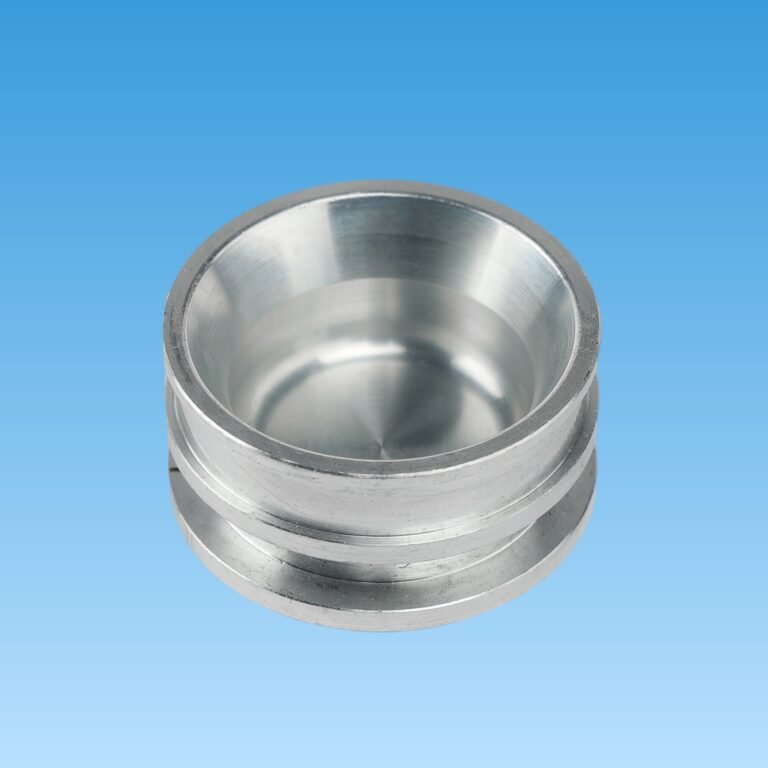AISI 1215 and 12L14 are two widely used free-machining carbon steels, known for their excellent machinability and efficiency in precision manufacturing. These materials achieve enhanced machinability through the addition of sulfur, phosphorus, or lead, meeting the needs of fast machining and mass production. This article provides a detailed comparison of AISI 1215 and 12L14, focusing on their material properties, applications, advantages, and disadvantages.
Ⅰ. Basic Chemical Composition Comparison
- AISI 1215:
- Carbon (C): 0.09% - 0.13%
- Manganese (Mn): 0.75% - 1.05%
- Sulfur (S): 0.26% - 0.35% (high content improves machinability)
- Phosphorus (P): Max 0.09%
- 12L14:
- Carbon (C): 0.15% - 0.26%
- Manganese (Mn): 0.85% - 1.15%
- Sulfur (S): 0.26% - 0.35%
- Phosphorus (P): Max 0.04%
- Lead (Pb): 0.15% - 0.35% (key addition enhances machinability)
The chemical composition reveals that 12L14 is based on AISI 1215 with the addition of lead, which significantly improves machinability but affects weldability and environmental compatibility.
Ⅱ. Performance Comparison
- Machinability:
- AISI 1215: As a high-sulfur free-machining steel, AISI 1215 offers excellent machinability but is slightly less efficient than 12L14.
- 12L14: The addition of lead makes 12L14 superior in machinability, resulting in lower tool wear and higher processing efficiency, making it ideal for automatic lathes and high-speed machining.
- Mechanical Properties:
- AISI 1215: Tensile strength ranges from 365 MPa to 540 MPa, with hardness between 121 - 187 HB, suitable for general-strength parts.
- 12L14: Tensile strength is slightly lower, around 390 MPa, and hardness is similar (120 - 160 HB). It has slightly lower durability and load-bearing capacity compared to AISI 1215.
- Weldability:
- AISI 1215: Weldability is limited due to high sulfur content, but it can be welded with appropriate techniques.
- 12L14: The presence of lead further reduces weldability, making it unsuitable for welded components.
- Corrosion Resistance:
- Both materials are carbon steels with poor corrosion resistance, making them unsuitable for long-term use in humid or corrosive environments.
- Environmental Compatibility:
- AISI 1215: Lead-free, making it more environmentally friendly.
- 12L14: Contains lead, which may release harmful substances during processing, restricting its use in regions with stringent environmental regulations.
III. Application Comparison
- Applications of AISI 1215:
- Ideal for mass production of parts requiring good machinability, such as bolts, nuts, and gears.
- Suitable for components with moderate machining precision and weldability requirements.
- Commonly used in general mechanical and automotive components manufacturing.
- Applications of 12L14:
- Perfect for precision machining scenarios requiring exceptional machinability, such as small, complex parts produced on automatic lathes.
- Suitable for non-welded, high-efficiency production parts, such as electrical components, small shafts, and pins.
- Well-suited for high-volume production lines where time efficiency is critical.
Ⅳ. Advantages and Disadvantages
- AISI 1215:
- Advantages:
- Excellent machinability, suitable for moderately complex machining.
- Cost-effective with high value for money.
- Environmentally friendly, meeting stricter regulations in certain regions.
- Disadvantages:
- Machinability is slightly inferior to 12L14.
- Limited weldability.
- Poor corrosion resistance.
- Advantages:
- 12L14:
- Advantages:
- Superior machinability, ideal for high-precision machining.
- Low tool wear and high processing efficiency, suitable for automated mass production.
- Disadvantages:
- Contains lead, raising environmental concerns and limiting use in certain markets.
- Extremely poor weldability.
- Slightly higher cost compared to AISI 1215.
- Advantages:
Ⅴ. Material Selection Recommendations
- Choose AISI 1215:
- When parts require good overall performance but do not demand extreme machinability.
- When compliance with environmental standards (e.g., EU RoHS or REACH regulations) is necessary.
- For cost-sensitive applications where low material costs are prioritized.
- Choose 12L14:
- When machining efficiency is the top priority, such as in automated production lines.
- For parts with complex geometries and high surface finish requirements.
- For applications without welding or corrosion resistance demands.
Ⅵ. Conclusion
Both AISI 1215 and 12L14 are representative free-machining steels, each with unique advantages and suitable application scenarios. AISI 1215 emphasizes cost-effectiveness and environmental friendliness, making it ideal for general mechanical processing. In contrast, 12L14 excels in machinability and efficiency, making it a preferred choice for precision manufacturing. When selecting a material, it is crucial to consider machining requirements, performance demands, and budget constraints to achieve optimal results. As environmental regulations tighten, developing materials that balance machinability and lead content reduction will become a focal point for future innovation.


